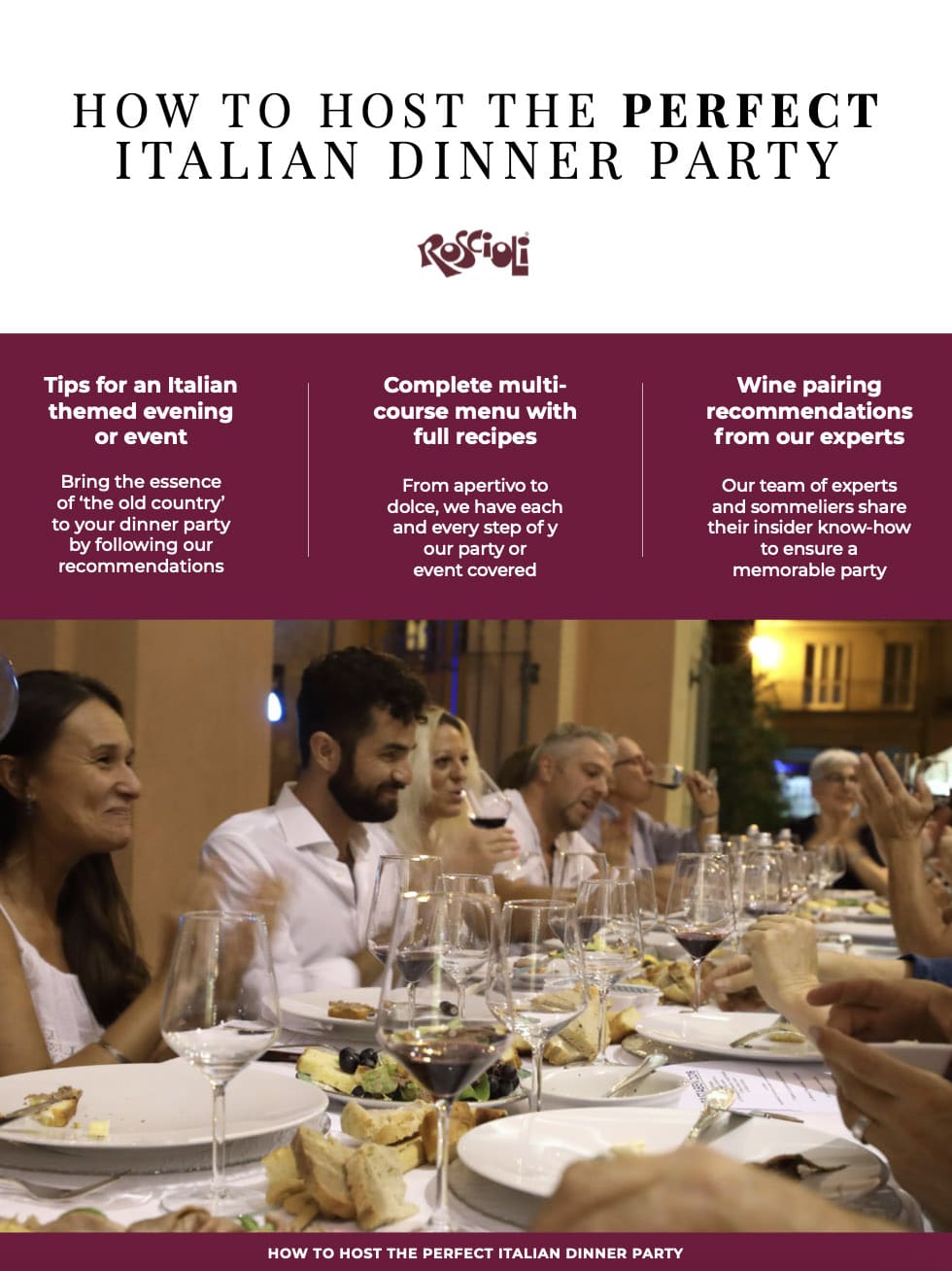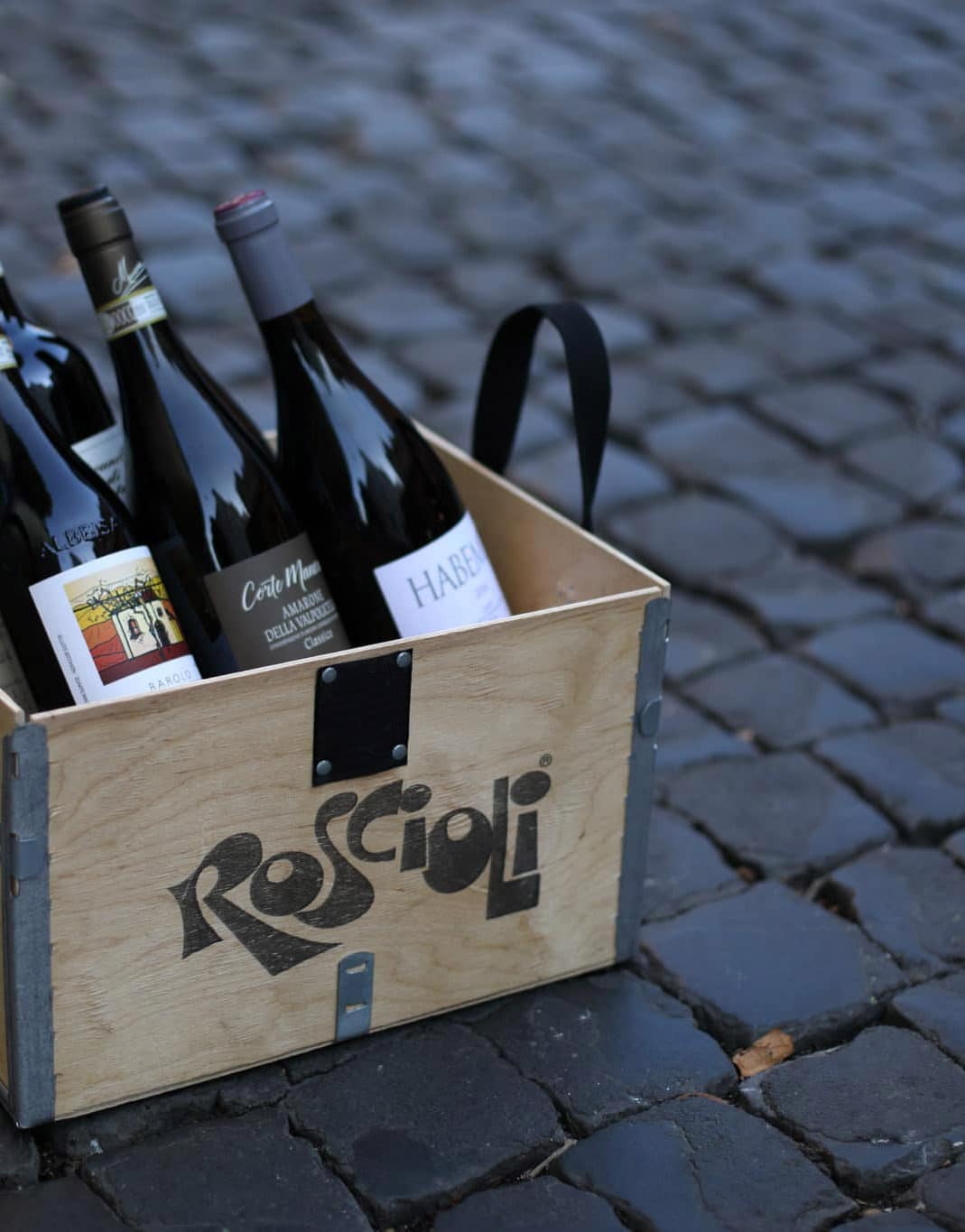VINO DA RIMESSA, MARABINO
Grape: Technically illegal to say (but Giacche and Parigina)
Region: Noto (SICILIA)
Pairings: all the wild flavors of Sicily, tuna steaks, caponata siciliana, spicy meats
Drink by: now through 2022
Notes: biodynamically farmed, unregistered grapes
Description: Dedicated to my son... 'Ogni scarrafone è bello a mamma soia" - A mother of a beetle finds her son beautiful' Neapolitan proverb. Which literally means that it does not matter how bad you are but your mom will love you anyway. Or ... if I've never made wine it's because I've always thought it would be much easier to drink it, and desperately judge it. Perhaps waiting for that opportunity in which I could put my desires at risk without actually risking anything. In short, the ideal situation.
The opportunity presented itself a few years ago, walking among the vineyards of Pierpaolo. I asked, walking on the hill of Marabino what were those slightly different plants. He tells me that maybe they are two hybrid vines of northern Italy, Giacche and Parigina, but he is not convinced. What are you doing? I asked him. I don't know, there are too few plants to do anything, Maximum 300-400 bottles.
So I offer him a collaboration: I remove the whim of playing the vigneron and he does all the rest. My idea, I tell him: let's make a wine, I'll buy all the production in advance, and whatever happens, happens. I liked the idea of recovering two unknown vines, in extinction, in such a well-known territory. Giacche, but above all Parigini hybrids are related to the American vines. A lot of fruit, body, perhaps little personality, but this land is magical, if it has ennobled the Nero d'Avola and the Muscatedda, who knows what's possible.
So three years later I go back to the cellar with Lindsay, and hell, I think the wine is a bomb. Fruit, strawberry, cherry and a Nordic freshness on the finish. A bipartisan wine, able to satisfy the most simple palate and bribe the most sophisticated palates. Two months ago, the first bottles arrived in Rome and, upon opening the cartons, I saw my label, Vino da Rimessa. An emotion. I finally feel part of a world from which I've always felt detached. There was always a filter, a membrane, that of judgment. Now, I'm part of the game. I open it and immediately feel enveloped by the warmth of the sun, the softness of the fruit. The first taste has the same sweet and lactic taste of the skin of my newborn son. A solar and Mediterranean embrace then leaves the space to an unprecedented, Nordic, austere freshness. The licorice notes here dance with the soft softness of a strawberry jam and then raspberries and oranges and pomegranates and all the red and orange fruits you want. It's a dip in a pool of flavors of the south, in a rustic villa overlooking the sea, on a holiday playing with the great love of my life, my son. Combine it with your best memories, the moments that are only experienced and not described, but above all allow yourself the pleasure of simple things and leave all those grim and pretentious thoughts out of the glass, that desire to see the result of your aspirations in others, in short your children for who they are and not for what you would like them to be.
BRUNELLO DI MONTALCINO 2013, POGGIARELLINO
Grape: 100% Sangiovese Grosso
Region: Montalcino (TOSCANA)
Pairings: a nice Florentine steak, quality cured meats, wild and red meats
Drink by: now through 2026
Notes: large Slovenian oak, non-filtered
Description: I'm not going to tell you a story...
The suspension of judgment - Epoche - according to the ancient Greeks was the basis of true knowledge. And so a Zen story talks about the professor who wants to know Buddhism and goes to a hermit who pours him a cup of tea and continues to pour until it spills out of the cup and the professor says: what are you doing? And the hermit laughs: How can you know if you do not first empty your cup of preconceived and preconceived knowledge. And more times we have said how often children are capable of the most daring and relevant descriptions in judging a wine.
And we have also reported studies of neurology that confirmed the fact that between Logos - word/story - and wine there was an unbridgeable neuronal distance due to the simple fact that the palate and taste and smell are primordial and instinctive, geographically distant from the side of the brain that develops language. And finally, there are times that one would like to remain silent and let the wine, in its evocative power, ancestral and tribal, speak for itself, of senses and not of sense, through emotions and suggestions rather than scores and descriptions.
So speaking with Anna and Lodovico there are no clear statements, stories about their land, the history and the taste that make the world of wine the most lied about market in the world. Lodovico says he does not go to the fairs because he is shy. Anna argues with the keys of the gate and takes her with her husband who would like to expand the cellar: but where do you want to go at 82? he says to her. Then he speaks of the regret of having to abandon his business upon reaching limits of age without anyone in the family who wants to take it (and we immediately say 'we'll take it over' - part joking, part serious)
In short, the story of two simple Tuscan people, without particular stories, who shy away from the silly circus of storytelling about false terroirs and false traditions. Two humble and beautiful people who make a wonderful wine, surrounded by woods, facing the Montosoli Hill, the only true area of Montalcino. The rest, in the valley, are thousands of hectares of commercial fruit and built up stories of a wine that has become too famous too quickly, just a label without substance. To combine with silence, pleasure, and those rare moments when we can simply enjoy something without judging it.
SCHIAVA (VERNATSCH) RISERVA 'SANKT ANNA' 2012, IN DER EBEN
Grape: 100% Schiava (Vernatsch)
Region: Trentino Alto Adige
Pairings: meat dishes, or dishes made with mushrooms and speck, lamb, strong gamey dishes and venison
Drink by: now until 2028
Notes: biodynamic, indigenous yeasts, aged in 5hl casks, non-filtered, maximum respect for the land
Description: Arriving in the Alto Adige, I could have easily mistaken that I was in another country across the Alps. The street signs are first in German, and second in Italian. The architecture is chalet-like for all the shops, and the restaurants there smell of wurtstel, apple strudel, and speck. And while many can speak Italian, you know by their pronunciation and simple, formal speaking that it's not their first language.
The Alto Adige with a heritage of nearly 3,000 years of winemaking has been called home by various peoples throughout the centuries . To briefly introduce you to this area, it was initially inhabited by Latins in the Roman times, but saw heavy Germanic settlement from the Renaissance to the 1900s. It became territory of the Hapsburgs (Austria) in 1803, then after a defeat became part of Bavaria (Germany) under Napoleon, had a short moment of French rule before Napoleon would be defeated in 1815 and it would return to Austria. Then during WWII, Italians we able to occupy and annex the area which Mussolini would control with heavy Italianization. Later in 1943, the Italians would sign a pact with the Allies which put again in German control, which would end with the end of the Nazi regime and put it back in the hands of Italy. I'll digress there but it's technically more complex.
As you can imagine, no one agrees on anything here, and finally, it was decided to allow both languages in the area. It's an area with racial discrimination, where many don't feel they belong to the 'Italian' culture and nearly half don't even wish to be Italian. The grape, Schiava, or as many may call it Vernatsch (the German translation) is the dominant red grape in this predominantly white wine area planted much to Sauvignon, Gwertztraminer, Pinot Bianco and Chardonnay. The vineyards of In der Eben were only planted to this grape until Urban took it over from his parents and planted a handful of other local varieties. He's a young guy with a world of dreams ahead of him, trying to make quality, age-worthy wines in his region. He continues to improve nearly 30 years of organic winemaking with biodynamic practices even in a region where some switch away from organics because they say 'it's simply too difficult'. In my opinion, he's one you'll want to watch and pay attention to in this area.
Schiava, or Vernatsch, is usually a fresh easy wine. Nice, fruity and earthy someone called it, wrongly I think, the light Pinot Noir. You would never expect from a light Pinot Noir to age for more than 20-30 years (I tried once a Schiava Scxhleier 1976 that was more lively than most of the Oregon Pinot Noir). That said, we chose In der Eben over more than 200 different producers of Schiava from Alto Adige to demonstrate that this grape variety can give you wines that are not simply light Pinot Noir. Fruit and cherries and wild strawberries in the 2015, with a palate that is metallic, refreshing and deep. A wine that is almost 4 years old and taste like a baby.
Vineyards, as Urban says in the video, are 60-70 years old (the cellar is more than 700 years old), and you can feel it, taste it, especially with the Riserva Sanct Anne. The Riserva 2012 for a wine could perfectly stay beside a big Barolo in a blind taste (and the price is also in that range).
CESANESE DEL PIGLIO SUPERIORE RISERVA 2017, ALBERTO GIACOBBE
Grape: 100% Cesanese d'Affile
Region: Piglio (Lazio)
Pairings: savory dishes like stews, roasted and grilled lamb, traditional pasta dishes from Rome like Amatriciana, Carbonara and Cacio e Pepe, good quality salami and hams, medium aged cheeses.
Drink by: now until 2023
Notes: at least 12 months in steel, and at least 18 in bottle, Rimessa purchased nearly all their production
Description: Alberto Giacobbe has a story that starts like many of ours. He went to school and was preparing to be an accountant (let's face it, following the family heritage of growing grapes wasn't going to pay much more than the bills), until that is that he fell in love with his family's vineyards and choose to take a complete turn in life. In the recent years, certain producers of Cesanese have made improvements, even if this isn't a 'marketable' grape to be sold to the masses. This wine is one of them. 65 year old vines from a specific clone not easy to find these days from a small village Affile planted by his grandfather (unfortunately he lost both father and grandfather just recently), coupled with organic practices and love and passion for what he is doing in life and out comes a wine that gives you a wine that could almost compete with some Burgundian wines, but at a fraction of the price. This complex yet easy drinking wine is best paired with a homemade dinner and great friends, and a perfect way to surprise them with a lesser known, indigenous grape that has been cultivated in Lazio for thousands of years. Nice fruit, but a more interesting refreshing minerality that comes from the soil of an old volcanic lake bed in the area.
CHIANTI CLASSICO RISERVA 'GROSSO SANESE' 2012, IL PALAZZINO
Grape: Sangiovese with tiny blend of other indigenous grapes
Region: Monti in Chianti (Tuscany)
Pairings: pasta dishes, medium-aged cheeses, pork dishes and cured meats.
Drink by: now until 2021
Notes: certified organic, indigenous yeasts, extreme minimum of sulfites added, 25,000 bottles produced
Description: Love it, love it, love it! I really like Edoardo and Alessandro Sderci, I like their vineyards, their simple winemaking approach, and how a father and a son can work perfectly together without arguing and fighting (that's what it looks like). It makes me want to have a child and run a winery together.
Their wines again represent Tuscany in all it's simplicity, without, the perfect shapes of the perfect hills without Cabs and Merlot, without the stupid suffix Super in front of the region.
Wish you had a Brunello di Montalcino? Grosso Sanese is often preferred to a Brunello beside it. It's warming, powerful, round with structure, full bodied with a refreshing acidity that explodes with persistency on your palate.
BARBARESCO 2015, CASCINA MORASSINO
Grape: 100% Nebbiolo
Region: Barbaresco (Piedmont)
Pairings: prime rib, steak, red meat
Drink by: 2030, best in a few years
Notes:
Description: I can’t really tell you at the end if Roberto Bianco is a good winemaker, nor could I about Palladino, Sobrero, Conterno, Rinaldi. All of them - nice people, who make great wines, but what if they are just lucky. Lucky to have vineyards in one of the most distinctive wine regions in the world.
At minute 1.23 you can see the famous blue marl (Marna Blu). That’s the secret. All you have to do, if you’re a winemaker with a vineyard with that soil, is to stay behind the wine, as a tutor, as a supporting actor. Henry Jayer used to say: the less I do, the better my wine. He meant: the less I struggle with barrels, fancy machines, roto-macerators, selected yeasts, heavy fertilizations (Napa Valley wines, in synthesis), the better my wine is. In which sense better? Better in the sense that the soil, the climate, the place, the grape variety the soul of the wine come out. And that’s what I want from a wine, to tell a local story, to reveal a unique local flavor, to be different. And that’s what you should like about this wine club. Because if you don’t, if you’re looking for predictable flavors, for those wines that constantly repeat the same game, play the same music with notes of oak, too much fruit extraction, predetermined flavors from scientifically selected yeast, well it might just be better to cancel your subscription, because you’re wasting your time and money.
So, that’s the big conflict - to drink a wine which is easy, soft and average, but absolutely anonymous, or a wine that is unique, complex and with a strong personality but unpleasant and disturbing?
In the ‘90s in Barolo and Barbaresco there were two parties: The modern ones: lots of small new oak barrels, fruity, soft flavors, sometimes illegal blends, modern technology, and the traditionalists: old big barrels, hard tannins, high acidity, no fruit. But in between this conflict there were wineries like Cascina Morassino. His vineyards are 100mt from the Barbaresco village and as I said he’s been lucky enough to have spots on the top of the hill. Lots of light and sun, dry and windy. Wines there are fruity and mineral, modern and traditional at the same time. This is one of the few Barbaresco that can be drank both when young and old.
How to Host the Perfect Italian Dinner Party
Bring Italy to you with our free guide to planning and hosting the perfect Italian dinner party!
Find recipes, wine paring recommendations and other tips for a memorable evening, all curated by our team of experts - download today here:
 SEI IN ITALIA? CLICCA QUI
SEI IN ITALIA? CLICCA QUI 


